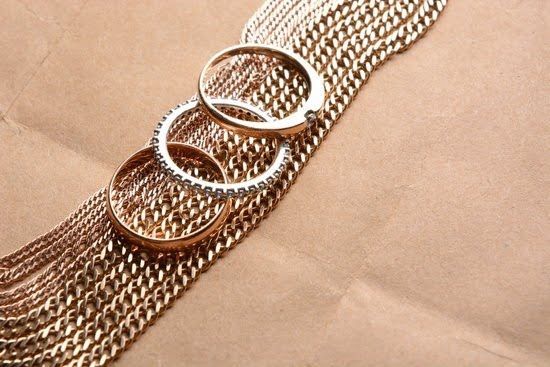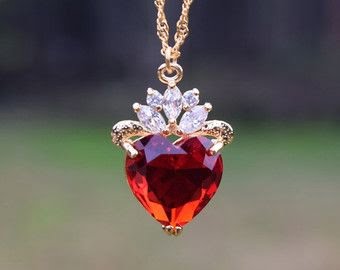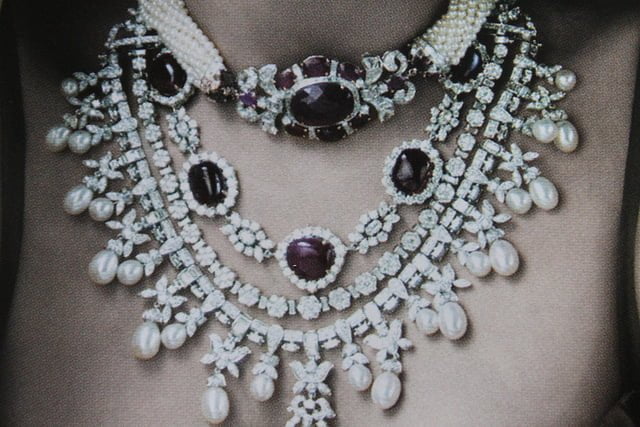Introduction
When it comes to jewelry, understanding the materials used to make it is of utmost importance. In recent years, there have been numerous cases of illnesses and allergic reactions linked to the use of certain metals in jewelry items such as necklaces and earrings. Knowing which metals should be avoided can help individuals stay safe and remain healthy. This article will discuss some of the metals commonly used in jewelry, including those that should be avoided due to their potentially harmful properties.
Overview of Different Metals
The types of metals most commonly used to make jewelry are fine gold, silver, and platinum. Gold is the most popular for its natural soft yellow lustre and the wide variety of alloys that give it the ability to be shaped into a variety of forms. Silver is also durable and malleable, making it ideal for piercing designs. Platinum is a legacy metal, prized for its beauty, strength and long-lasting color. For those looking for more affordable options there are many different base metals such as copper, brass, steel, aluminum and nickel-silver (also known as alpaca or German silver). Copper is an alloy that’s strong yet ductile allowing it to be cast and hammered into many shapes. In some cultures copper jewelry is worn solely for therapeutic benefits like improved circulation. Brass consists of copper and zinc which has been around since antiquity due to its combination of softness and strength. Steel has only recently emerged as a possible jewelry metal but has become increasingly used due to its affordability while still possessing durability and giving pieces weight to them. Aluminum is lightweight with a silvery sheen however it can be easily scratched so not often seen in high quality wearable items. Nickel-Silver or alpaca alloy made from copper mixed with zinc and nickel provides bright silver colouring combined with strength therefore ideal for achieving intricate designs like filigree work.
Metals To Avoid
When shopping for jewelry, it is important to be aware of the types of metals that should be avoided. These include nickel, lead, and cadmium, which may cause allergic reactions or other skin irritation. To identify jewelry containing these metals, look for any engravings or markings indicating the manufacturer’s name and a metal type as well as any physical signs such as discoloration on the surface of the metal. Additionally, you can ask your jeweler to verify whether or not a specific piece of jewelry contains one of these adverse metals. Furthermore, examining either gold-plated items or silver-plated pieces to ensure they are properly sealed – this will give a clue as to whether they harboring harmful substances beneath the plating. Keeping in mind these tips when making purchases will help ensure that your jewelry remains safe and free from potential harm.
Reasons To Avoid These Metals
Metals such as copper, nickel, aluminum and cobalt can be found in some jewelry and are used to give pieces a silver or gold-plated look. However, they should always be avoided due to the potential health risks associated with them. For instance, regular exposure to these metals can cause contact dermatitis, which appears as an itchy rash due to an allergic reaction. Nickel is especially common in costume jewelry because it is so inexpensive. It has been nicknamed “the great imitator,” as it can take on the look of white gold or silver but often still triggers skin inflammation even though its concentration is too low for it to be classified as an allergen by law. Inhaling aluminum dust from grinding or buffing jewelery can pose a greater risk of developing Alzheimer’s disease or other neurological conditions over time. Copper can also cause reactions on the skin in some people and carries the risk of bleeding gums if ingested. Lastly, exposure to cobalt has been linked to mental health disorders such as depression and anxiety due to neurotoxin buildup in the brain over time. Therefore, all these metals should be avoided if possible when selecting jewelry items.
Alternative Metals To Choose
Instead of traditional metals for jewelry, such as silver, gold and platinum, there are many alternatives available. Stainless steel and titanium are two great options that offer a combination of strength, affordability and style. Stainless steel is the harder choice between the two; it is resistant to corrosion and oxidation, making it perfect for everyday wear. Titanium provides a softer look that is lightweight and highly durable; titanium does not corrode over time like other metals can. Cobalt chrome is another popular option because of its white coloration, hypoallergenic traits, and strength which rivals that of titanium or stainless steel. Additionally, tungsten carbide is an increasingly popular alternative with its ultra-hard material which resists scratches and maintains a matte finish. If you want something unique yet tasteful, palladium is a good choice due to its strength compared to other precious metals like gold or platinum but with a fraction of the cost. These options offer high grades of quality at various price points so there’s something for everyone.
Conclusion
In conclusion, when purchasing jewelry it is important to be aware of what metals have been used in the manufacturing process. If a metal causes skin reactions then it is wise to avoid jewelry made of that metal. When shopping for jewelry, inquire about what type of materials were used and do some research on those particular metals prior to making a purchase. Some safer metals and materials to look for include 14K gold, sterling silver, copper, and titanium. In addition, reputable jewelers can be trusted to provide accurate information about the safety and quality of their products. Another great resource for finding high-quality pieces made with safer materials are independent artisans who specialize in handcrafted jewelry.

Welcome to my jewelry blog! My name is Sarah and I am the owner of this blog.
I love making jewelry and sharing my creations with others.
So whether you’re someone who loves wearing jewelry yourself or simply enjoys learning about it, be sure to check out my blog for insightful posts on everything related to this exciting topic!





